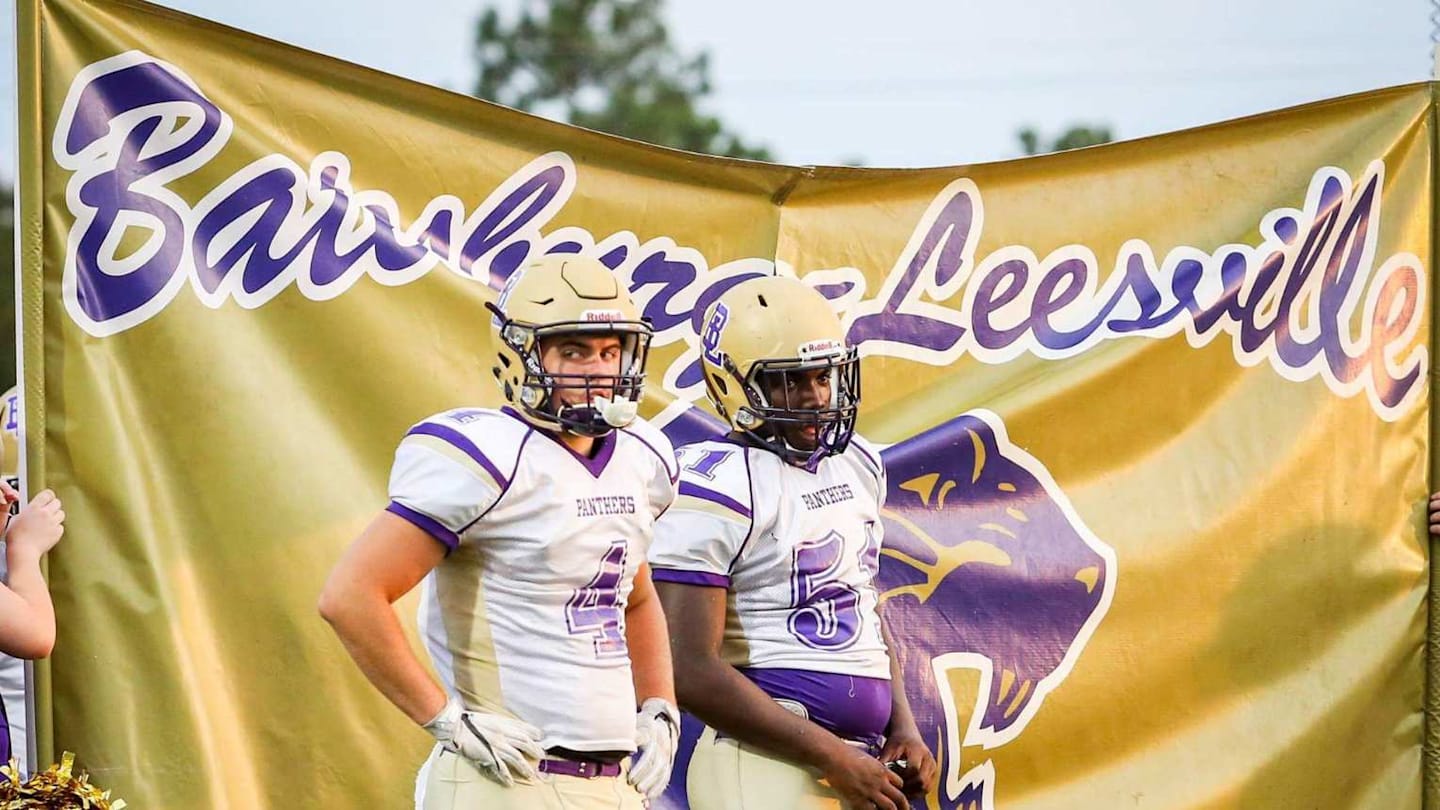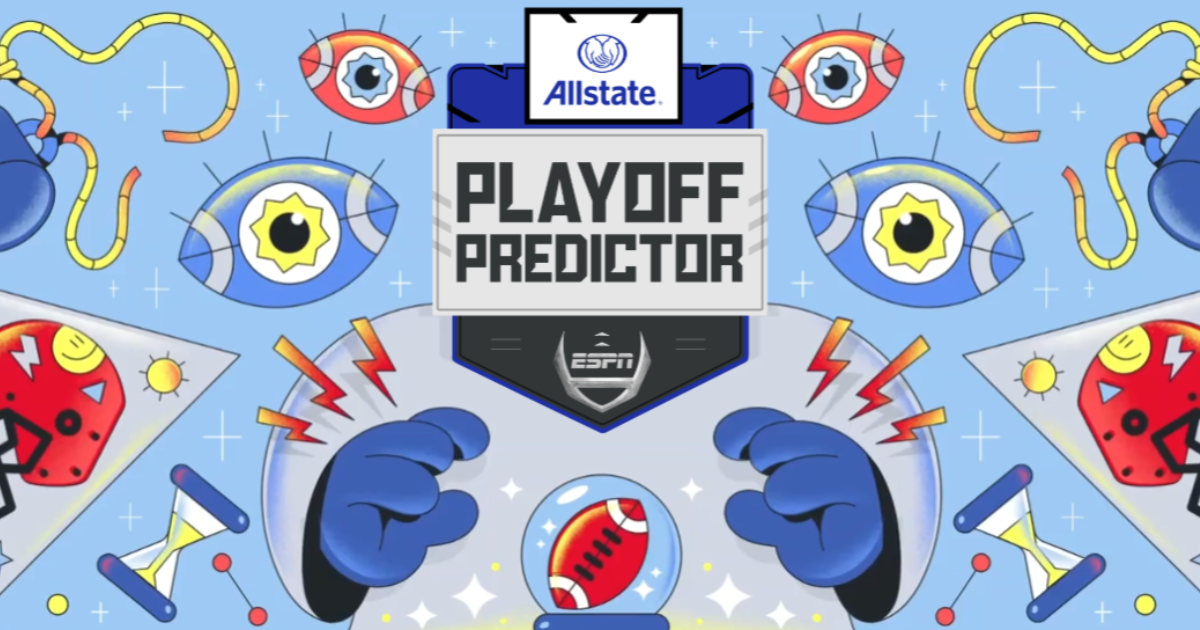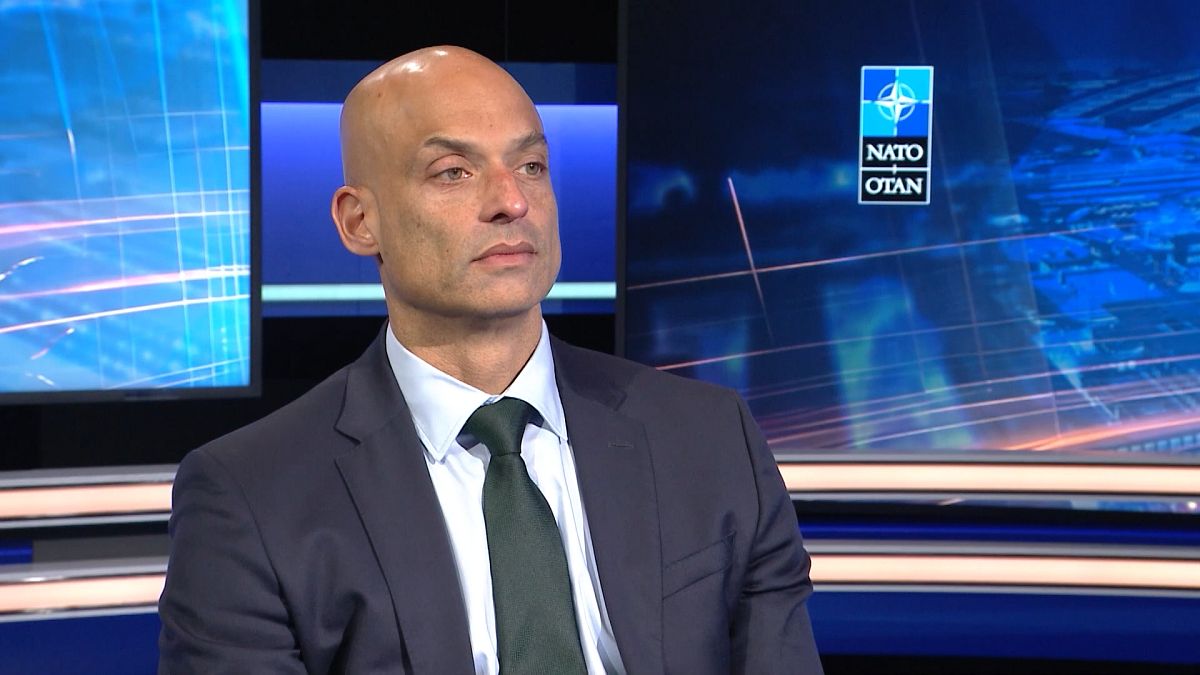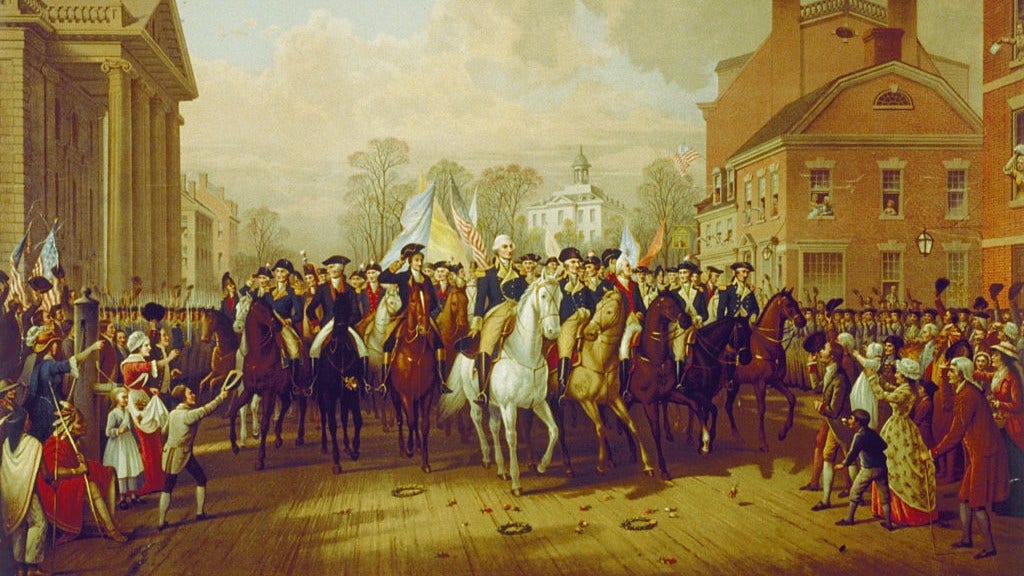South-Carolina
Presidential primaries have seen dramatic comebacks. Could DeSantis ’24 be next?

Ron DeSantis was involved in a traffic accident while in Chattanooga, Tenn., this week raising money for his presidential bid. The candidate was not injured, which may have been the single best piece of news the campaign has had in a while.
The other kind of news for the Florida Republican seemed to be everywhere and all at once. His campaign announced it was shedding a third of its staff and “retooling” its fundraising amid reports of donor desertion. The Associated Press referred to the campaign as “stalled,” Rich Lowry of National Review used the words “faltering” and “diminished” in a piece for Politico. The Wall Street Journal editorial page, often a cheerleader for the governor, noted “the headlines say [the campaign] is in an unrecoverable dive.”
The media critiques went beyond DeSantis’ problems with staffing and fundraising to question his performance on the stump. Stories told of DeSantis “scolding” students at one event for wearing masks and snapping at reporters at a news conference.
Most troubling of all may have been DeSantis’ problems with messaging. He has defended his administration’s new Florida history curriculum, which alludes to “benefits” that enslaved people may have derived from their life in bondage – such as blacksmithing skills. That drew a rebuke from rival candidate Sen. Tim Scott of South Carolina, who’s Black, who said there had been no “silver lining in slavery.”
DeSantis may have been expected to stand by his state’s curriculum changes, but it was harder to understand why he reached for controversy by saying he might appoint Robert F. Kennedy, Jr. as head of the FDA or the CDC. Kennedy, a Democrat, is also a candidate for president, and famous as a vaccine conspiracy theorist, harshly critical of the scientists who lead the federal health agencies.
Most candidates would not consider either slavery or RFK Jr. an issue to emphasize, much less the hill they would choose to die on.
Perceptions prompt comparison to former presidential hopeful Rick Perry
Perceptions of DeSantis have changed greatly since he won reelection in November 2022 by 20 points. In January he was seen as the foremost threat to Donald Trump for the 2024 Republican nomination, trailing the former president by just two percentage points in the 538.com average of national polls. As of this week, that gap has widened to 37 percentage points. DeSantis poll numbers have fallen by more than half as other candidates have entered the fray and taken a share. And that trendline has prompted comparisons to the recent history of another Sun Belt governor who had his eyes on the White House, Rick Perry of Texas.
A dozen years ago, Perry entered the GOP lists for the 2012 nomination against incumbent President Barack Obama. Having been elected and reelected in the nation’s second most populous state, Perry had a gaudy list of endorsements and wealthy backers. His TV ads were impressive.
But Perry’s in-person campaigning did not match expectations. After the first candidate debates of 2007 the buzz was all about his lackluster performances. Vowing to fight on, Perry pointed to a November debate where he hoped to turn things around. That was when he pledged to eliminate three cabinet level departments of the federal government if elected – Education, Commerce … and he could not remember the third. After a fumbling pause he said: “Oops.”
Needless to say, things did not get better after that. Crushed in the 2012 Iowa caucuses, Perry all but ignored New Hampshire to concentrate on South Carolina. But when his poll numbers there also sagged, he dropped out. In 2016, having just retired as the longest-tenured governor in Texas history, he tried again. But in a field of more than 15 candidates dominated by Trump, Perry barely registered. He dropped out before the Iowa caucuses.
Needless to say, no candidate for president wants to be compared to Rick Perry. But on Fox News on June 28, DeSantis told a Fox News host he would eliminate the same three departments as Perry — Education, Commerce and, as Perry had eventually remembered, Energy (which wound up being the department where Perry served as secretary under Trump). DeSantis threw in the IRS, too, which gave him a longer list than Perry’s.
Throughout the agonizing train wreck that was the Perry campaign, the candidate seemed unable to understand that the persona and priorities that had lifted him to such success in Texas were not working the same on the national stage.
Can this campaign be saved?
DeSantis’ campaign has reached the point where some observers wonder if it’s too late to turn his fortunes around. They note that Trump’s growing advantage over DeSantis in polls has been driven less by improving numbers for Trump than by deteriorating support for the Floridian.
But there are positives in this picture for the Florida governor. First, it is early — or at least relatively early — in the campaign season. The first voting activity leading to actual delegates being chosen does not happen until January 15, when Iowa holds its caucuses. That gives DeSantis and other candidates still seeking traction more than five months to find it. If the right formula can be found, there is time to follow it.
Second, the field is in some senses still unsettled. While half the Republican electorate may be satisfied with Trump, there is still the other half. And if the ever-mounting legal woes of the former president finally begin to erode the bedrock of his support, it may be possible for a single strong challenger to consolidate the opposition.
Third, there are beacons of hope for troubled candidates in recent presidential campaign history. By choosing to call the latest phase of his effort an “insurgency,” DeSantis has acknowledged that he is battling the odds. Of course, when he adopted the campaign motto “The Great American Comeback,” he was not expecting it to apply to his campaign.
The term “comeback” has long been associated with the first presidential push of a young Arkansas governor named Bill Clinton. Then 45, Clinton was seeking the Democratic nomination against the sitting president George H.W. Bush in 1992. Bush had been so popular following the success of the Persian Gulf War in 1991 that many ambitious Democrats in Washington thought it better to wait for the 1996 cycle to run. Clinton looked strong in the preliminary phase of the campaign but was on the ropes as the primaries began, battered by two potentially fatal blows.
Newspaper stories had highlighted steps he took to avoid the draft during the Vietnam War, and in a woman he had known in Arkansas named Gennifer Flowers told a supermarket tabloid the two had had a years-long affair. She repeated her story in a televised news conference.
Clinton stumbled to a distant third-place showing in the Iowa caucuses (won by a favorite son candidate, Tom Harkin) and fell far behind in New Hampshire. But on that state’s primary night in February, Clinton in second place had closed the gap to single digits and won half the available delegates.
He went on TV to thank New Hampshire for making “Bill Clinton the comeback kid.” The national media coverage largely followed that line, much to the distress of the primary’s first-place winner, Sen. Paul Tsongas of neighboring Massachusetts. A few weeks later, on Super Tuesday, Clinton won most of the big state primaries, many of them in the South, and the lion’s share of the delegates. He was soon cruising to the nomination.
McCain turned his ship around
More directly comparable to DeSantis’ situation, and closer to his political home, was the turnaround achieved 16 years later by the campaign of Arizona Republican Sen. John McCain. A former POW in Vietnam who had made many friends in his time in the Senate, McCain was well known for his spirited “Straight Talk Express” campaign challenging George W. Bush for the GOP nomination in 2000. McCain came up short that time, but his profile was elevated in the Senate and he retained much of his appeal for independents.

But when it came to running another campaign, McCain quickly ran aground. The national agenda had changed over the two terms of the second President Bush, which included the Sept. 11, 2001 terror attacks and subsequent wars in Afghanistan and Iraq.
The man who had been New York City mayor during those attacks, Rudy Giuliani, was now running for president as “America’s Mayor” and leading in national polls for a time.
Other notables in the field in 2007 included Massachusetts Gov. Mitt Romney (now a senator from Utah) and Mike Huckabee, a former governor of Arkansas. McCain’s standing in Iowa had suffered with his opposition to ethanol subsidies and he trailed Romney in polling in New Hampshire.
In the summer of 2007, with his early money drying up and fundraising slowed, McCain saw many news accounts of his flagging campaign. Some were ready to write him off. But that July he revamped his campaign from top to bottom and let go some longtime aides, including close friends, to begin anew. He seemed ready to do whatever it took, including altering his positions on key issues such as immigration.
By the time the campaign reached the voters in January 2008, the McCain operation had righted itself. After conceding Iowa to his rivals, McCain stormed back into contention with a smashing win in New Hampshire that netted him most of the delegates at stake.
As for one-time front-runner Giuliani, he had decided he did not need to go hard at Iowa and New Hampshire and concentrated instead on the late January primary in Florida. Giuliani finished third there, winning no delegates, and withdrew from the race the next day.
The following week brought Super Tuesday and a favorable mix of states for McCain, who won nine states to Romney’s seven and Huckabee’s five and pocketed most of the delegates. Romney then left the race and urged the other candidates and the party to unite behind McCain.
At such times in the past, struggling campaigns have rescued themselves with the right moves and a dose of luck. At other times, it has taken major missteps by front-running candidates to open the door. In DeSantis’ case, it might well require both.
Copyright 2023 NPR. To see more, visit https://www.npr.org.

South-Carolina
How to watch South Carolina vs Iowa State women’s basketball: Time, channel, live streams

The 4th-ranked South Carolina Gamecocks women’s basketball team next ships off to the Sunshine State for a matchup with No. 15 Iowa State at the Fort Myers Tip-off. The game is scheduled to start at 1:30 p.m. ET with TV coverage on FOX and streaming on-demand.
- How to watch: Live streams of the South Carolina vs. Iowa State game are available with offers from FuboTV (free trial), SlingTV (low intro rate) and DirecTV Stream (free trial).
- For a limited time, FuboTV is offering $30 off the first month after the free trial period. With the $30 offer, plans start at $49.99.
#4 South Carolina Gamecocks (5-1) vs. #15 Iowa State Cyclones (5-1)
NCAA women’s basketball matchup at a glance
When: Thursday, Nov. 28 at 1:30 p.m. ET
Where: Suncoast Credit Union Arena, Fort Myers, Fla.
TV channel: FOX
Live streams: FuboTV (free trial) | SlingTV (low intro rate) | DirecTV Stream (free trial)
Both South Carolina and Iowa State lost their first games of the 2024-’25 season within the past eight days, with the Gamecocks falling on the road to No. 5 UCLA (77-62) on Sunday and the Cyclones to Northern Iowa (87-75) last Wednesday in Cedar Falls. South Carolina is now 5-1 in its defense of the 2024 NCAA women’s championship with a top-10 win over NC State highlighting the team’s early-season résumé. The Gamecocks will be Iowa State’s first ranked opponent after falling to No. 2 seed Stanford in overtime (87-81) in the second round of last season’s NCAA Tournament
South Carolina Gamecocks vs. Iowa State Cyclones: Know your live streaming options
- FuboTV (free trial) – excellent viewer experience with huge library of live sports content; free trial lengths vary; monthly rate after free trial starts at $59.99 after current $20 discount offer.
- SlingTV (low intro rate) – discounted first month is best if you’ve run out of free trials or you’re in the market for 1+ month of TV
- DirecTV Stream (free trial) – not the same level of viewer experience as FuboTV, but the standard 7-day free trial is still the longest in streaming.
South Carolina and Iowa State are set for a 1:30 p.m. ET start on FOX. Live streams are available from FuboTV (free trial), DirecTV Stream (free trial) and SlingTV (low intro rate).
South-Carolina
South Carolina high school football scores: Live updates, live streams (11/8/2024)

The 2024 South Carolina high school football season is in high gear and SBLive Sports is the place to follow of the live scoring updates and finals.
Follow the action get the most to date scores by tracking the SBLive South Carolina High School Football Scoreboard. We will have in-game score updates and all of the final scores from every corner of the state. You can also search for full schedules and complete scores from all of your very favorite teams.
Here’s a guide to following all of the South Carolina high school football this week.
STATEWIDE SOUTH CAROLINA FOOTBALL SCOREBOARD
CLASS 5A SCORES | CLASS 4A SCORES
CLASS 3A SCORES | CLASS 2A SCORES
CLASS 1A SCORES
SCISA CLASS AAAA | SCISA CLASS AAA
SCISA CLASS AA | SCISA A
2024 SOUTH CAROLINA FOOTBALL SCHEDULES: FIND YOUR TEAM
Can’t make it to your favorite team’s game but still want to watch them live? You can watch dozens of South Carolina high school football games live on the NFHS Network:
WATCH LIVE ON NFHS NETWORK
We also invite you to visit the brand new South Carolina homepage on High School on SI, powered by SBLive Sports, for the latest news, highlights, analysis, scores, photos and information on South Carolina high school sports. Follow our live game coverage and read our feature stories, breaking news, the latest recruiting news, rankings and much more.
Follow SBLive South Carolina throughout the 2024 high school football season for Live Updates, the most up to date Schedules & Scores and complete coverage from the preseason through the state championships!
Be sure to Bookmark High School on SI for all of the latest high school football news.
To get live updates on your phone – as well as follow your favorite teams and top games – you can download the SBLive Sports app: Download iPhone App | Download Android App
— Mitch Stephens | mitch@scorebooklive.com | @highschoolonsi
South-Carolina
ESPN's College Football Playoff Predictor has updated again. Here's where South Carolina stands

ESPN.com’s College Football Playoff predictor isn’t perfect because it applies analytics to a situation that ultimately will be decided by a committee of humans. But it does provide a nice guide and discussion piece about which teams have the best chance to make this year’s College Football Playoff.
Because of that human element, the predictor has been updating twice each week, once on Sunday to account for Saturday’s games and again after the latest CFP rankings are released.
[More for subscribers: What latest rankings mean for South Carolina’s College Football Playoff chances]
While the Gamecocks won their game on Saturday and got a lot of help from the teams around them last week, the logjam of SEC teams ahead of them in Tuesday’s rankings is still limiting their upside at this time.
With the committee putting South Carolina behind fellow three-loss SEC teams Alabama and Ole Miss, the predictor currently gives South Carolina a 20 percent chance of making the 12-team field, which is three percentage points lower than its chances in Sunday’s update.
The Gamecocks do, of course, have one more huge opportunity to pad their resume when they travel to Clemson this weekend to renew the annual rivalry in what may be the biggest game in the matchup’s history.
Beat the Tigers, who are currently No. 12 in the CFP Top 25, and South Carolina’s chances of making the playoff jump to 46 percent, according to the predictor.
While that’s just under a coin flip, it’s also 12 percentage points lower than it was in Sunday’s update.
South Carolina is still very much in the hunt but is going to need to win and play very well against Clemson and get more help around it.
[GamecockCentral: $1 for 7 days]
As a reminder, the CFP committee’s top 12 teams won’t correlate exactly with the 12-team field.
The CFP will consist of the top five highest-ranked conference champions and the next seven highest-ranked at-large schools. The top four conference champions will receive the top four seeds and a first-round bye. The fifth conference champion will be seeded by its CFP ranking. If that ranking is outside of the top 12 it will be seeded 12th as the final team in the field.
The teams seeded 5 through 12 will fight it out in the first round with the winners advancing to the quarterfinal round to face the top four seeds.
The Gamecocks and Tigers are set for a noon showdown Saturday in Clemson.
ESPN Analytics uses FPI to simulate the entire college football season 200,000 times. A committee model is applied to mimic College Football Playoff selections and seeding in order to generate a 12-team bracket for each simulation. The most likely CFP teams are provided for user selections. After user inputs, a likely bracket is generated and randomly simulated using FPI.
-

 Science1 week ago
Science1 week agoTrump nominates Dr. Oz to head Medicare and Medicaid and help take on 'illness industrial complex'
-

 Health5 days ago
Health5 days agoHoliday gatherings can lead to stress eating: Try these 5 tips to control it
-

 Health3 days ago
Health3 days agoCheekyMD Offers Needle-Free GLP-1s | Woman's World
-

 Science2 days ago
Science2 days agoDespite warnings from bird flu experts, it's business as usual in California dairy country
-

 Technology2 days ago
Technology2 days agoLost access? Here’s how to reclaim your Facebook account
-

 Science1 week ago
Science1 week agoAlameda County child believed to be latest case of bird flu; source unknown
-

 Sports1 week ago
Sports1 week agoBehind Comcast's big TV deal: a bleak picture for once mighty cable industry
-

 Entertainment16 hours ago
Entertainment16 hours agoReview: A tense household becomes a metaphor for Iran's divisions in 'The Seed of the Sacred Fig'

















